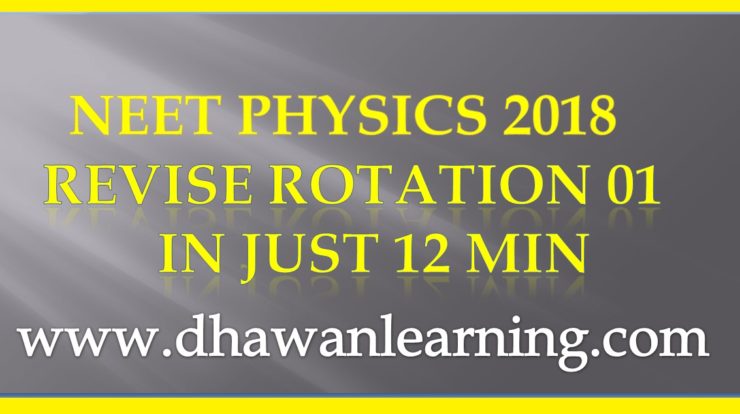
RIGID BODY
A rigid body is defined as that body which does not undergo any change in shape or volume when external forces are applied on it.
A point in the system at which whole mass of the body is supposed to be concentrated is called center of mass of the body.
For a system consisting of n particles with masses m1, m2, m3 … mn with position vectors r1, r2, r3…rn, the total mass of the system is, M = m1 + m2 +m3 +………….+ mn
Angular displacement (θ) : Unit is radian and dimension is [M0L0T0]
Angular velocity (ω): Unit is radian/sec and dimension is [M0L0T −1]
Moment of inertia: The moment of inertia (I) of a rigid body about an axis is defined as the sum of product of masses of all particles of the body and the squares of their perpendicular distances from the axis of rotation.
Unit: kg m2 Dimensions : [ML2T0]
I = ∑mi.ri²
Where mi is the mass of each particle and ri is the relative distance of the particle from the axis of rotation
Radius of gyration: Distance from axis where if all mass is kept, It would have same moment of inertia Unit: m Dimensions : [ML1T0]
THEOREMS to FIND MOMENT OF INERTIA
PARALLEL AXIS :The moment of inertia of a body about any axis is equal to the sum of its moment of inertia about a parallel axis through its center of gravity and the product of the mass of the body and the square of the distance between the two axes.
I = ICM + Mh2

PERPENDICULAR AXIS The moment of inertia of a plane laminar body about an axis perpendicular to the plane is equal to the sum of the moments of inertia about two mutually perpendicular axes in the plane of the lamina such that the three mutually perpendicular axes have a common point of intersection.
Iz = IX + IY
ROLLING : when center of mass has translational motion, and rotational about center of mass.
REMEMBER that ROLLING is not possible without friction. BUT this frictional force does not do ANY WORK. So loss of frictional WORK is not taken into account.

FOR PERFECT rolling VCM = R ω
If VCM > Rω, then example is skidding of vehicle
And VCM < ωR is example when car is not able to move on either SAND or ICE
RELATION BETWEEN TRANSNATIONAL and ROTATIONAL

CONSERVATION of ANGULAR MOMENTUM: when NO external TORQUE is acting. Torque is also rate of change of ANGULAR MOMENTUM. It has same role in ROTATIONAL MOTION as force in translation Motion
DOWNLOAD NOTES HERE
For body rolling down an inclined plane

In this case please do remember that, we require minimum amount of friction, so minimum coefficient of friction is required. If we have available friction coefficient, then rolling is possible
PREVIOUS YEAR PAPERS
NOW PREVIOUS YEAR SOLVED QUESTION
PREVIOUS YEARS PART 2
